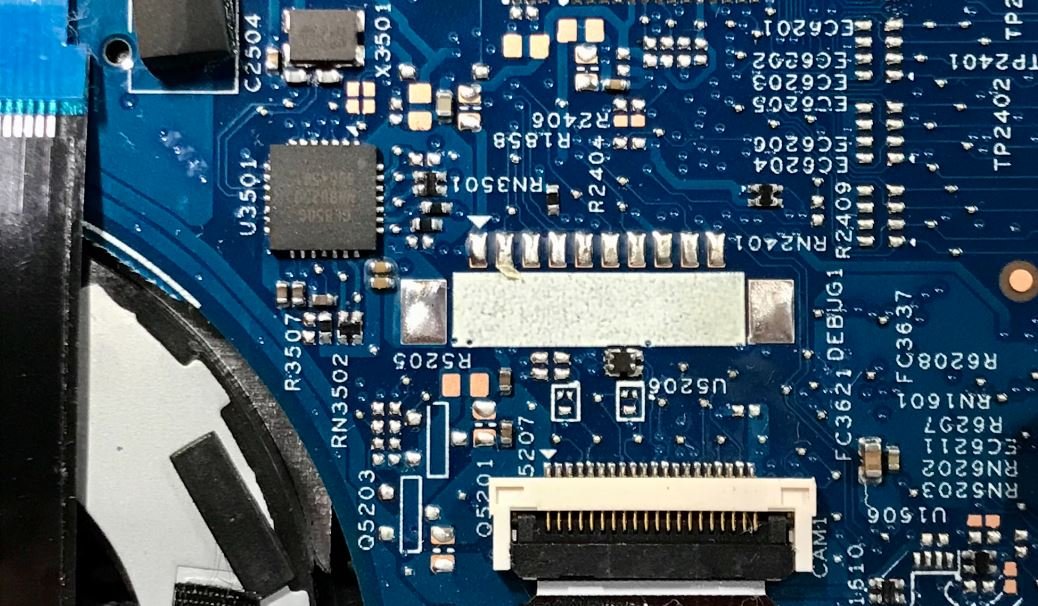Artificial Intelligence and Cybersecurity
Artificial Intelligence (AI) has revolutionized various industries, and cybersecurity is no exception. With the increasing number of cyber threats and the complexity of cyber attacks, AI has emerged as a powerful tool in defending against malicious activities. By leveraging machine learning and other AI techniques, organizations can enhance their security measures and effectively protect sensitive data.
Key Takeaways:
- Artificial Intelligence is transforming cybersecurity in the face of growing cyber threats.
- Machine learning and other AI techniques are being employed to strengthen security measures.
**AI’s ability to analyze vast amounts of data and patterns** has enabled it to detect and prevent cyber attacks more efficiently than traditional security systems alone. It can quickly identify and respond to threats, learn from past incidents, and adapt its defenses to constantly evolving attack methods. With AI-powered cybersecurity, organizations can stay one step ahead of hackers and protect their networks, systems, and data.
*AI can analyze data and patterns more efficiently than traditional security systems alone.*
**One of the key benefits of AI in cybersecurity is its ability to automate and streamline tasks** that would otherwise consume valuable time and resources. AI algorithms can explore massive amounts of data, identify potential vulnerabilities, and automatically fix them. By automating routine security tasks such as threat detection, AI frees up security professionals to focus on more complex issues and strategic decision-making.
*AI algorithms can explore massive amounts of data and automatically fix vulnerabilities.*
AI-Powered Security Solutions
Various AI-powered security solutions have been developed to enhance cybersecurity. These solutions leverage machine learning and advanced algorithms to tackle evolving cyber threats effectively. Here are three examples:
| Name | Description |
|---|---|
| 1. Intrusion Detection Systems (IDS) | AI-based IDS continuously monitor networks and systems for unusual activities, providing real-time alerts and preventing potential breaches. |
| 2. Behavioral Analytics | These solutions use AI algorithms to analyze user behavior and detect anomalous patterns that could indicate malicious activity. |
| 3. Predictive Threat Intelligence | By utilizing AI-driven techniques, this solution predicts and proactively addresses threats, allowing organizations to stay proactive in their cybersecurity efforts. |
**AI can revolutionize incident response by automating the detection and containment of cyber attacks**, minimizing the potential damage caused. The speed and accuracy of AI-powered response systems reduce the time-to-detection and response, limiting the attacker’s ability to further infiltrate the organization’s network.
*AI can revolutionize incident response by automating the detection and containment of cyber attacks.*
The Future of AI in Cybersecurity
As cyber threats continue to evolve, the integration of AI into cybersecurity will become even more critical. Organizations will need to invest in developing and deploying advanced AI solutions to address the ever-growing complexities of cyber attacks. Additionally, AI ethics and regulatory considerations will need to be carefully addressed to ensure the responsible and secure use of AI in the cybersecurity field.
**The combination of AI and cybersecurity will enhance organizations’ abilities to protect against emerging threats**, providing real-time monitoring, predictive capabilities, and automated responses that will be crucial in securing sensitive data and maintaining trust with users.
*The combination of AI and cybersecurity will enhance organizations’ abilities to protect against emerging threats.*
Conclusion:
Artificial intelligence is playing a crucial role in strengthening cybersecurity measures. By leveraging AI technology, organizations can detect, prevent, and respond to cyber threats more effectively, ensuring the protection of valuable data. The integration of AI into cybersecurity solutions has already proven to be highly beneficial, and its use will only continue to expand as the cyber landscape evolves.

Common Misconceptions
Misconception 1: AI technology can completely replace human experts in cybersecurity
One common misconception surrounding artificial intelligence and cybersecurity is that AI technology can entirely replace human experts in the field. While AI can assist in enhancing cybersecurity measures, it cannot fully replace the knowledge and expertise of human professionals.
- AI systems need human oversight and fine-tuning to ensure accurate results.
- Human intuition and critical thinking are vital in determining the context of complex cyber threats.
- Human expertise is essential for understanding and adapting to new and evolving cybersecurity challenges.
Misconception 2: AI technology can predict and prevent all cyber attacks
Another misconception is that AI technology has the ability to predict and prevent all cyber attacks. While AI can analyze vast amounts of data and identify patterns, it cannot guarantee complete prevention of cyber attacks.
- AI systems mainly rely on historical data and may struggle to detect emerging or unknown threats.
- Cybercriminals can adapt their tactics to bypass AI-based security systems.
- AI systems might generate false positives or negatives, leading to both missed threats and unnecessary alerts.
Misconception 3: AI technology is always effective in detecting and mitigating security vulnerabilities
It is also commonly believed that AI technology is always effective in detecting and mitigating security vulnerabilities. While AI can enhance vulnerability detection, it is not infallible.
- AI systems may rely on known patterns and struggle with identifying novel vulnerabilities.
- False positives or negatives can occur when relying solely on AI-based vulnerability scanning.
- Human expertise is critical in interpreting and prioritizing vulnerabilities identified by AI systems.
Misconception 4: AI systems cannot be manipulated or exploited by cyber attackers
Some people wrongly assume that AI systems are immune to manipulation or exploitation by cyber attackers. However, like any technology, AI systems can be vulnerable if not properly secured.
- AI systems can be fooled by adversarial attacks specifically designed to deceive them.
- Cyber attackers can manipulate the training data of AI systems to introduce biases or weaken their effectiveness.
- AI systems need robust security measures to protect them from targeted attacks.
Misconception 5: AI technology automatically ensures privacy and ethical use of data
A common misconception is that AI technology automatically ensures privacy and ethical use of data. However, AI systems themselves need to be designed and governed with privacy and ethics in mind.
- Data used by AI systems must be carefully selected and anonymized to protect user privacy.
- AI algorithms can exhibit biases and discriminatory behaviors depending on the quality and nature of the training data.
- Close oversight and robust regulatory frameworks are necessary to address ethical concerns associated with AI use.

How Artificial Intelligence is Being Used in Cybersecurity
Artificial Intelligence (AI) has become an indispensable tool in the field of cybersecurity. AI technologies can autonomously detect and prevent cyber threats, strengthen security systems, and provide real-time response and analysis. The following tables illustrate the various applications of AI in cybersecurity.
AI-powered Cybersecurity Solutions
AI-powered cybersecurity solutions leverage machine learning algorithms and natural language processing to detect and respond to security incidents in real-time. These solutions continuously learn from new threats and adapt their defense mechanisms accordingly. The table below showcases the top AI-powered cybersecurity solutions in the market.
| Security Solution | Vendor | Description |
|---|---|---|
| Darktrace | Darktrace Ltd. | Uses unsupervised machine learning to identify anomalous behavior and respond to threats. |
| CylancePROTECT | Cylance Inc. | Employs AI algorithms to predict and prevent malware attacks without relying on signatures. |
| IBM Watson for Cybersecurity | IBM Corporation | Combines AI and advanced analytics to analyze and prioritize potential threats. |
AI in Behavioral Authentication
Behavioral authentication systems utilize AI algorithms to analyze user behavior patterns and detect anomalies that may indicate unauthorized access. This table presents examples of industries where AI-powered behavioral authentication is prominently utilized.
| Industry | Application of AI in Behavioral Authentication |
|---|---|
| Finance | AI analyzes typing patterns to verify user identity and detect potential fraudulent activity. |
| Healthcare | AI monitors behavioral patterns to ensure doctor and patient access is authorized and secure. |
| E-commerce | AI evaluates user behavior for risk scoring, preventing unauthorized access and fraudulent transactions. |
AI in Intrusion Detection Systems
Intrusion detection systems (IDS) combine AI algorithms with network monitoring to identify and stop potential attacks. The following table highlights the different types of AI-based IDS and their functionalities.
| AI-based IDS | Functionality |
|---|---|
| Anomaly-based IDS | AI detects deviations from normal network behavior, identifying potential threats. |
| Signature-based IDS | AI compares network traffic against known attack signatures to detect and prevent intrusions. |
| Hybrid IDS | Combines features of both anomaly-based and signature-based IDS to provide comprehensive threat detection. |
AI in Security Analytics
Security analytics tools powered by AI allow organizations to process and analyze vast amounts of security data efficiently. The table below showcases AI-driven security analytics tools and their applications.
| Security Analytics Tool | Vendor | Application |
|---|---|---|
| Splunk Enterprise Security | Splunk Inc. | Leverages AI to gather and analyze security data, enabling proactive threat hunting and incident response. |
| Securonix Security Analytics Platform | Securonix | Uses AI algorithms to automate threat detection, response, and predictive analytics. |
| QRadar Advisor with Watson | IBM Corporation | Enables AI-assisted investigation and prioritization of security incidents for faster response. |
AI in Malware Detection
Malware detection systems powered by AI algorithms can identify and prevent both known and unknown malware strains. The table presents notable AI-based malware detection tools and their key features.
| Malware Detection Tool | Vendor | Key Features |
|---|---|---|
| Cybereason | Cybereason, Inc. | Uses behavioral analysis and machine learning to detect and block complex malware attacks. |
| FireEye Endpoint Security | FireEye, Inc. | Combines machine learning with behavior-based analysis to detect and prevent advanced malware. |
| Trend Micro Deep Discovery | Trend Micro Inc. | Applies machine learning and artificial neural networks to identify and block sophisticated malware. |
AI in Threat Intelligence
AI-driven threat intelligence platforms integrate machine learning algorithms to automate the collection, analysis, and dissemination of threat intelligence. The table below lists leading AI-based threat intelligence platforms and their capabilities.
| Threat Intelligence Platform | Vendor | Capabilities |
|---|---|---|
| Cyber Threat Intelligence Platform | Recorded Future Inc. | Enables real-time monitoring, analysis, and visualization of global cyber threats. |
| ThreatConnect Threat Intelligence Platform | ThreatConnect, Inc. | Uses AI algorithms to prioritize threats, automate investigations, and enable collaboration. |
| Anomali ThreatStream | Anomali Inc. | Combines AI and machine learning to deliver actionable threat intelligence to organizations. |
AI-powered Vulnerability Management
AI-powered vulnerability management solutions leverage machine learning algorithms to identify and prioritize potential vulnerabilities. The following table presents prominent AI-based vulnerability management tools.
| Vulnerability Management Tool | Vendor | Features |
|---|---|---|
| Nessus | Tenable | Applies machine learning to identify potential vulnerabilities and prioritize remediation efforts. |
| Qualys Vulnerability Management | Qualys, Inc. | Utilizes AI algorithms for continuous vulnerability assessment and risk prioritization. |
| Rapid7 InsightVM | Rapid7 LLC | Employs AI-driven analytics to detect and prioritize vulnerabilities based on impact and risk. |
AI Chatbots for Security
AI chatbots assist in enhancing security operations by providing quick responses and automating routine tasks. The table below showcases AI-powered chatbots used in the field of cybersecurity.
| Chatbot | Vendor | Functionality |
|---|---|---|
| IBM Watson Assistant | IBM Corporation | Provides instant responses to security-related queries and assists in incident response. |
| Cyber AI Analyst | Darktrace Ltd. | Uses AI to provide analysts with accurate threat alerts and recommended response actions. |
| LogRhythm SmartResponse™ | LogRhythm, Inc. | Enables security analysts to automate and orchestrate incident response processes. |
The integration of artificial intelligence in cybersecurity has revolutionized the way organizations counter and prevent cyber threats. With AI’s ability to analyze vast amounts of data, detect anomalies, and respond in real-time, it has become a critical component in safeguarding digital systems and sensitive information. As cyber threats continue to evolve, leveraging AI technologies will be essential in staying ahead of malicious actors and protecting valuable assets.
Frequently Asked Questions
What is artificial intelligence?
Artificial Intelligence (AI) refers to the development of computer systems that can perform tasks that would typically require human intelligence, such as visual perception, speech recognition, decision-making, and problem-solving.
How is artificial intelligence being used in cybersecurity?
AI is being used in cybersecurity to detect and prevent various types of cyber threats and attacks. It is employed to analyze patterns, identify anomalies, and recognize potential security breaches in real-time, providing enhanced defense mechanisms for protecting sensitive data and systems.
What are the benefits of using artificial intelligence in cybersecurity?
The benefits of using AI in cybersecurity include improved threat detection and response, faster incident analysis, reduced false positives, enhanced accuracy in identifying unknown threats, adaptive security measures, and the ability to handle large volumes of data for effective monitoring.
Can artificial intelligence replace human cybersecurity professionals?
No, AI cannot completely replace human cybersecurity professionals. While AI can automate various tasks and assist in threat detection, human expertise is necessary to interpret the results, make critical decisions, develop strategies, and respond to emerging threats.
Is artificial intelligence susceptible to hacking and exploitation?
Like any technology, AI can be vulnerable to hacking and exploitation if not properly secured. However, incorporating robust cybersecurity measures ensures the protection of AI systems against potential attacks and reinforces their ability to detect and counter cyber threats.
How can artificial intelligence help in identifying unknown malware?
Artificial intelligence can help identify unknown malware by leveraging machine learning algorithms. By analyzing patterns and characteristics of known malware, AI algorithms can detect anomalies and behaviors indicative of previously unseen threats, allowing for proactive defense and timely mitigation.
What are the ethical implications of using artificial intelligence in cybersecurity?
The ethical implications of using AI in cybersecurity involve concerns about privacy, potential biases in decision-making algorithms, transparency of AI models, and the impact on human employment. It is crucial to ensure that AI is designed and used responsibly, respecting user privacy and addressing any ethical dilemmas that may arise.
Can artificial intelligence help in predicting and preventing cyber attacks?
Yes, artificial intelligence can help in predicting and preventing cyber attacks by analyzing historical data, identifying patterns, and recognizing early warning signs of potential threats. This proactive approach enables security teams to implement preventive measures and mitigate risks in advance.
What challenges does artificial intelligence face in cybersecurity?
Challenges faced by AI in cybersecurity include the potential for adversaries to manipulate AI systems, difficulty in distinguishing legitimate user behavior from malicious activities, and the need for continuous updates and improvements to keep up with evolving cyber threats.
How can organizations ensure the responsible use of artificial intelligence in cybersecurity?
Organizations can ensure the responsible use of AI in cybersecurity by implementing strong data protection protocols, regularly auditing AI systems for potential bias or unintended consequences, providing transparency in AI decision-making processes, and adhering to ethical guidelines and industry best practices.




